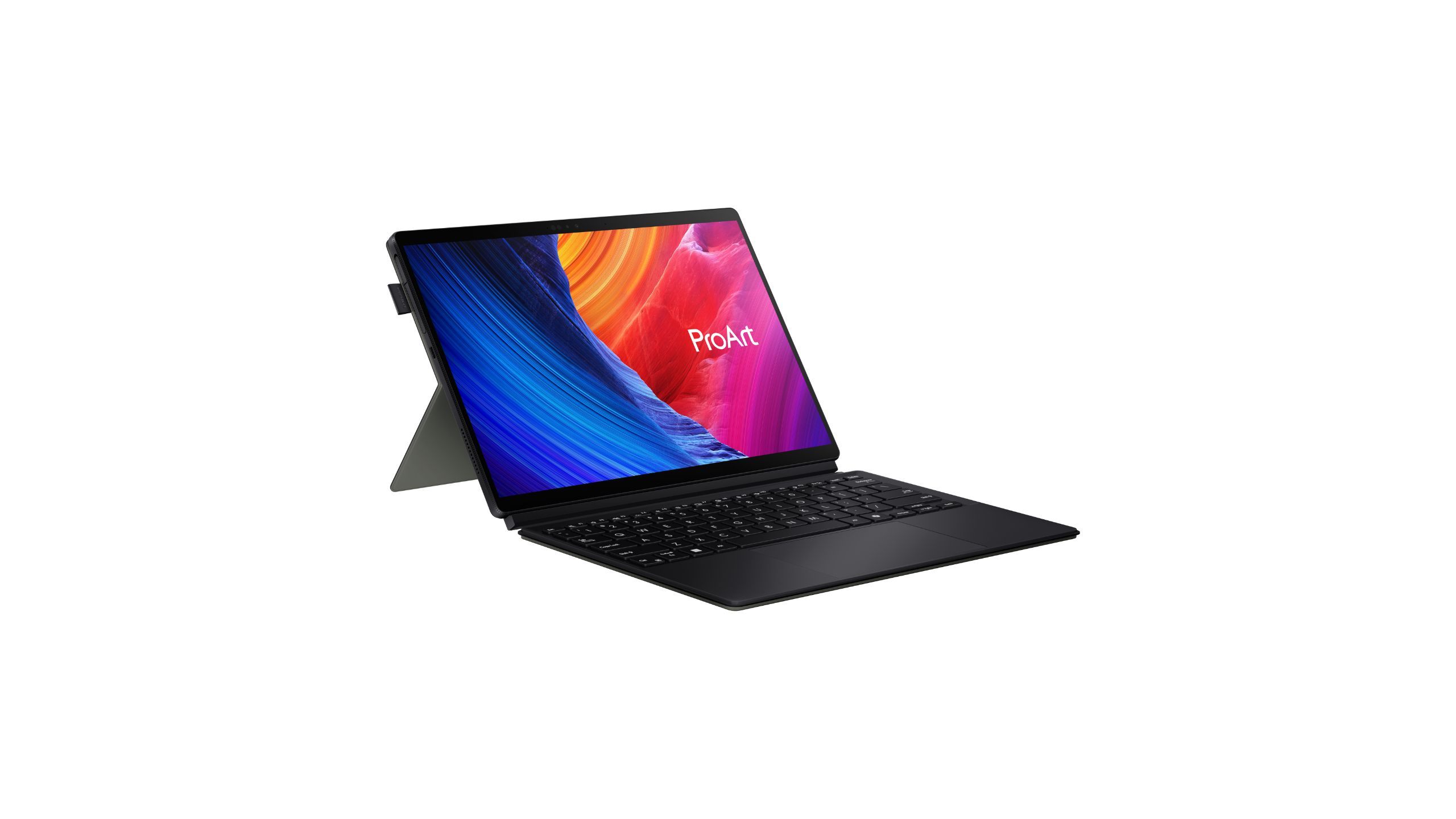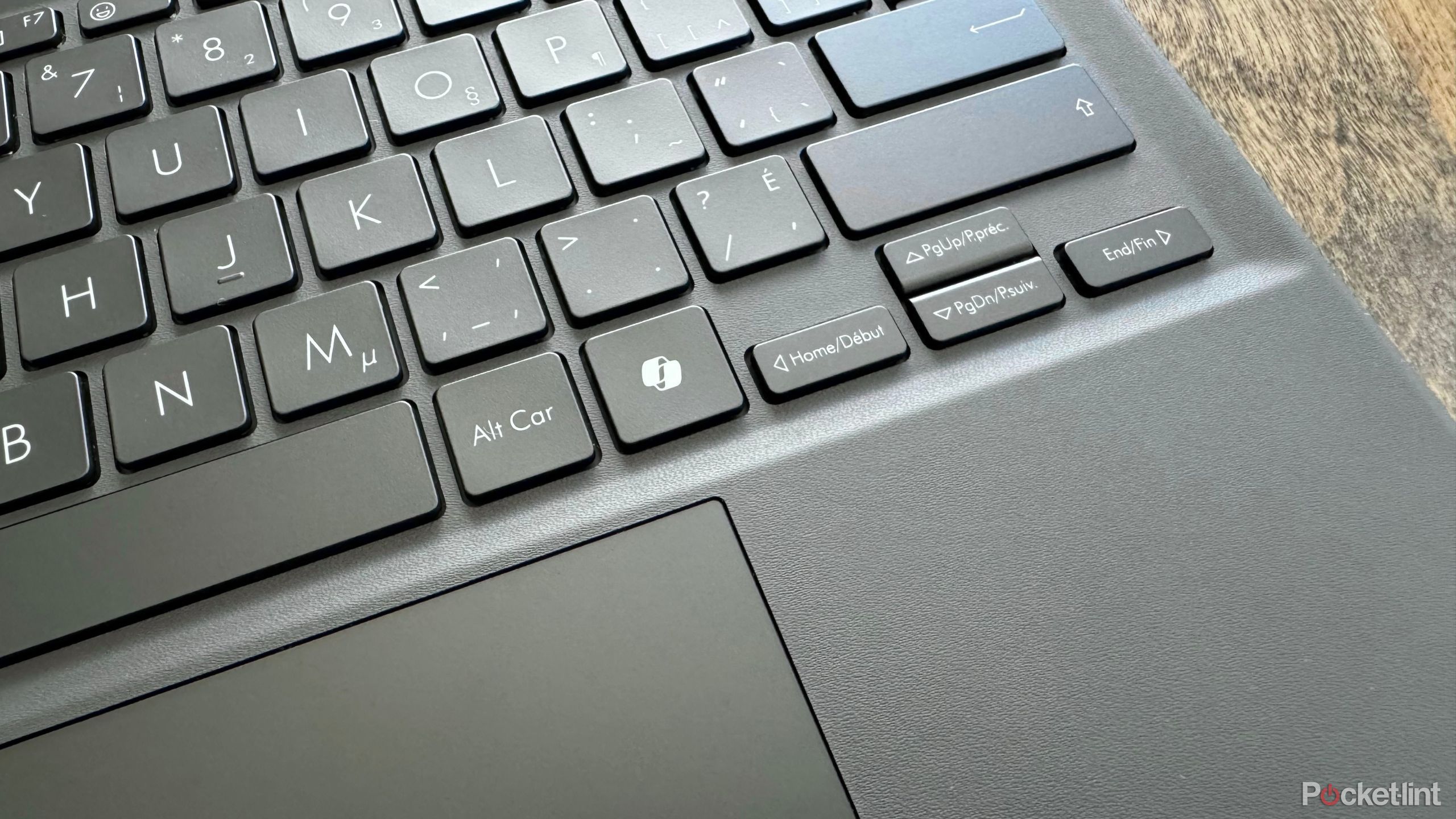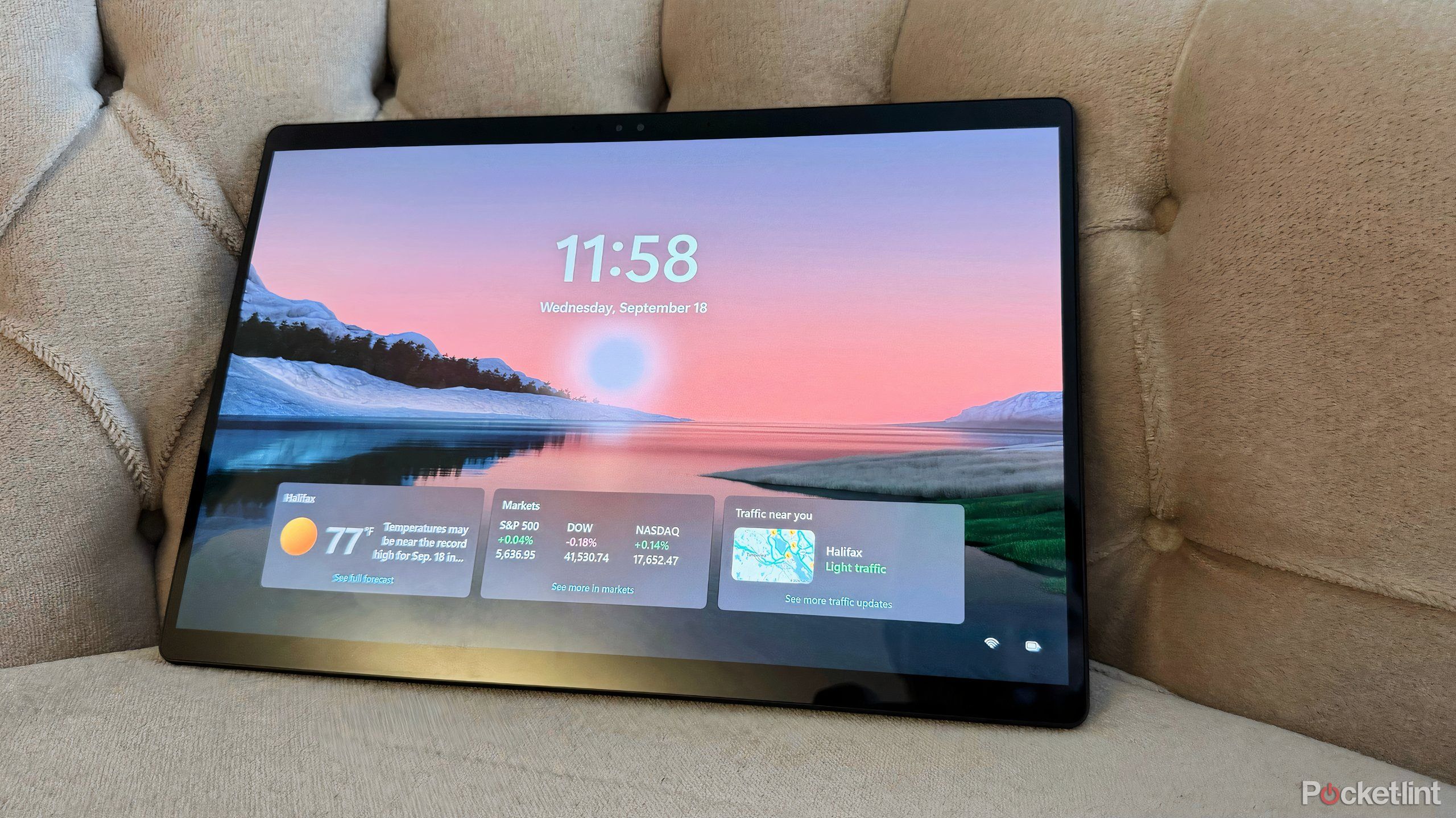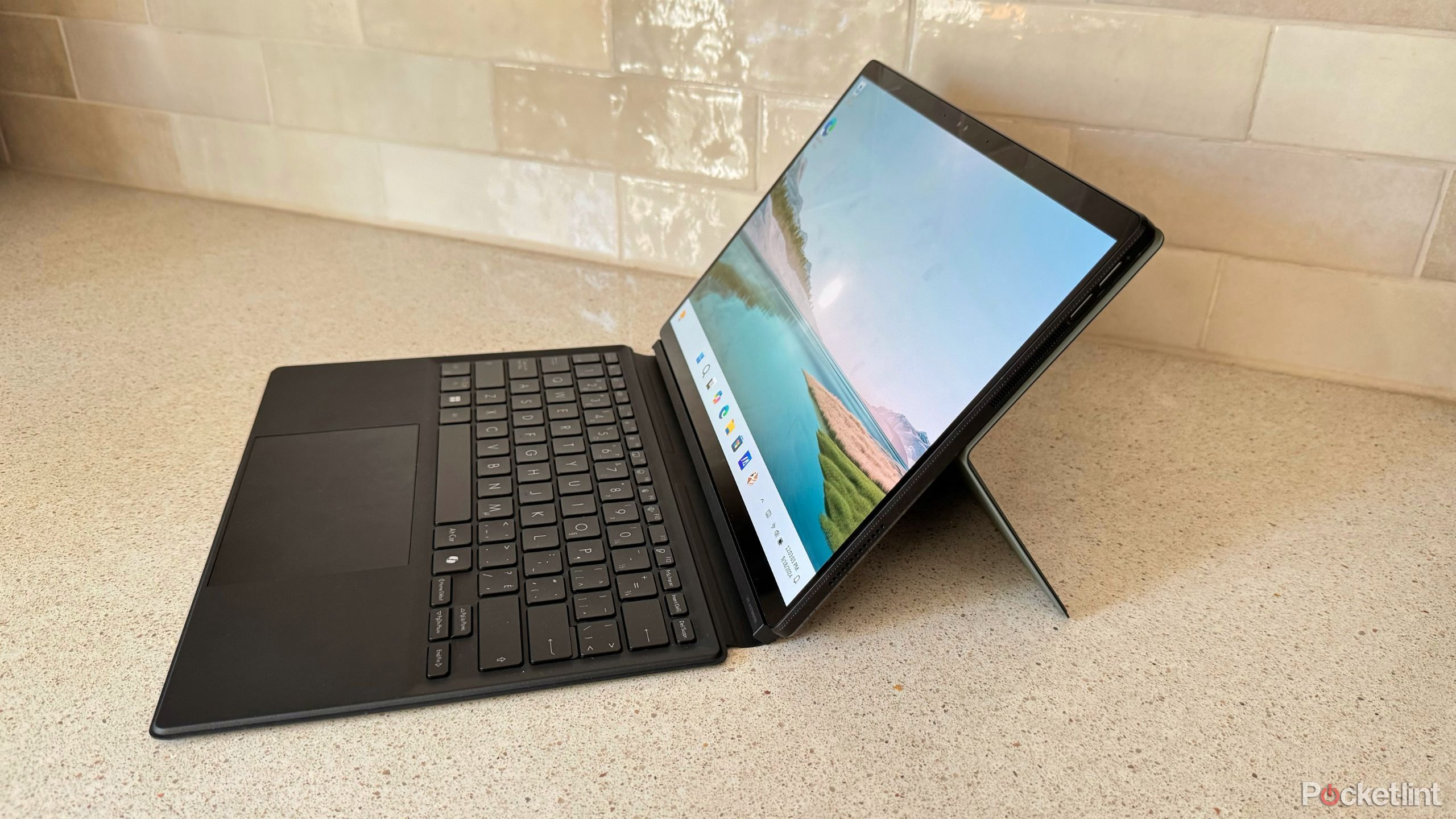Key Takeaways
- The Asus ProArt PZ13 is an ARM-based Windows 11 2-in-1 hybrid device.
- The tablet can be transformed into a laptop-style form factor via its included case accessory.
- Like other new Snapdragon X-based devices, the ProArt PZ13 is marketed as AI-ready from the get-go.
Windows 11-based PCs have been in the news as of late, which is the combined result of new ARM-based Qualcomm Snapdragon chips, as well as big AI ambitions over at Microsoft. A number of hardware OEMs have now started shipping their own ‘Copilot + PCs,’ Asus included.
The new Asus ProArt PZ13 is a convertible 2-in-1, much like the popular Microsoft Surface Pro line. The device is first and foremost a tablet, but it can transform into a laptop via its bespoke keyboard and kickstand cover accessories.
Has Asus managed to create a compelling product that can stand its own ground in the context of this new flood of ARM-powered AI PCs? I powered the device on to find the answer.

Recommended
Asus ProArt PZ13
The Asus ProArt PZ13 is a Windows 11 hybrid 2-in1 laptop that ships with the new Snapdragon X Plus ARM-based PC processor under the hood.
- Great standby battery life
- Gorgeous OLED
- Rugged build
- Thick and heavy as a tablet
- Slow 60Hz refresh rate display
- USB-C ports are all on one side
Price, availability, and specs
The Asus ProArt PZ13 is a large-sized tablet, with dimensions coming in at 11.71 x 7.99 x 0.36-inches (297.5 x 202.9 x 9mm). This footprint accommodates a 13.3-inch 2880 x 1800 pixel OLED panel, complete with relatively slim display bezels. The 16:10 aspect ratio is slightly taller than a standard widescreen panel, and it’s paired with a 60Hz refresh rate and up to 500-nits of brightness.
At 1.87lbs (0.85kg), the slab packs Qualcomm’s brand-new Snapdragon X Plus 8-core processor, which uses the same ARM-based architecture found in smartphones and other mobile-first products. A 5-megapixel front-facing camera with support for Windows Hello biometric authentication is matched with a 13-megapixel rear-facing shooter for document scanning purposes.
In terms of connectivity, the tablet offers 2 USB 4 Type-C ports and a full-sized SD card reader. The 70Wh battery is sealed in place and can be topped up using the included USB-C power adapter. Unfortunately, there’s no 3.5mm headphone jack in sight, but we do get contemporary Bluetooth 5.4 and Wi-Fi 7 radios as standard.
The ProArt PZ13 is available in nano black at a cost of $1,100, and it ships with 16GB of RAM and a 1TB SSD. The detachable keyboard and magnetic cover stand accessories are included in the box, specifically in a moss green colorway. An optional Asus Pen 2.0 Stylus can also be purchased, which will run you an extra $100.
What I liked about the Asus ProArt PZ13
The new Snapdragon X processor makes all the difference
With the ProArt PZ13 being outfitted with the new Snapdragon X Plus chip, it reaps a number of usability benefits that I immediately noticed and came to appreciate. The processor utilizes the ARM instruction set, which is the same technology leveraged by Android phones, iPads, and even newer Mac computers. Without getting too technical, these newer ARM-based processors are more efficient than x86-based Intel or AMD offerings.
The result is a processor package that is both performant and power efficient, resulting in less overall heat and subsequent fan noise. A Geekbench 6 score of 2,365 in single-core and 11,200 in multi-core verifies that this is a potent package suitable for just about every task, save heavy-duty video editing and AAA gaming.
The result here is a processor package that is both performant and power efficient.
Battery life is also predictably excellent, especially when it comes to standby. I’m not used to Windows PCs sipping on battery at a rate of only a couple of percentage points per night, and this was a major quality-of-life improvement for me over most existing PCs I’ve used. I wish the tablet’s USB-C ports were spread out across both sides of the unit for convenience while charging, but it’s not a huge deal.
Navigating through Windows 11 on the ProArt PZ13 is an absolute treat, with the device never skipping a beat in daily usage. Asus took the time to include the necessary hardware and software combo that enables the ‘touch the screen to wake’ feature, and it’s the sort of thing I wish every Windows PC included by default.
The two USB-C ports are USB 4 compatible, which means that they’re high-powered and can supply enough bandwidth for almost any peripheral you can throw at the system. Some more obscure Thunderbolt 4 accessories might throw up compatibility errors, but that’s an incredibly minor nitpick. I’m also happy that Asus decided to include a full-sized SD card reader in the device, which is highly convenient for transferring photos and video from a digital camera.
Combined with the Dolby Atmos-certified stereo speaker system, the ProArt PZ13 is a great choice for content consumption.
The big and bright OLED display is another high point — colors are vivid, blacks are true-to-life, and I found the 500 nits of peak brightness to be enough for comfortable visibility, even on a sunny day while perched next to a large window. Combined with the Dolby Atmos-certified stereo speaker system, the ProArt PZ13 is a great choice for content consumption.
I’m also very pleased with the two-piece detachable keyboard and kickstand case set, which Asus generously includes in the box. The keyboard is rigidly built and full-sized, with clicky keys that are satisfying to type away on. The kickstand is also great, with tons of flexibility when it comes to adjustable angles. Both accessories magnetically snap onto the tablet and don’t require any extra batteries, and together they effectively turn the tablet into a makeshift laptop.
This is a downright rugged 2-in-1.
And, finally, the device’s physical build itself — this is a downright rugged 2-in-1, with IP54 certification for protection against water sprays from any direction, and some limited protection against dust ingress added in for good measure.
Asus went a step further, engineering the device to meet the US MIL-STD-810H military-grade standard for enhanced drop protection. The process of certification stress tests the device at both high and low temperatures, with humidity, with exposure to vibration and shocks, as well as at high altitude.
What I didn’t like about the Asus ProArt PZ13
The device is a bit too weighty for comfortable tablet use
The ProArt PZ13’s rugged build is a double-edged sword — I appreciate the longevity it’ll doubtlessly provide, but I did find that the device suffered in tablet mode as a consequence. The entire thing is just a bit too weighty and thick to comfortably use in bed for reading or watching media, though this is a problem that plagues most other 13-inch tablets to one degree or another.
The only other aspect of the hardware that I can point to as being in need of improvement is the detachable keyboard’s trackpad. Don’t get me wrong, it’s pleasant enough to use — it’s spacious and highly precise, which makes it great for performing gestures to navigate through Windows 11.
I just wish that it offered a haptic-based experience as opposed to the less satisfying diving board clicking mechanism. It’s hard to complain when the accessory is included for free in the box, but it’s fair to say that once you go haptic, it’s difficult to go back.
I also do wish that Asus had shipped the product with a faster 120Hz refresh rate display. After growing accustomed to faster displays on devices like my smartphone, 60Hz ends up feeling choppy by contrast. If you haven’t experienced a fast refresh rate display yet, then you might not even pick up on the difference, but it’s worth pointing out nonetheless.
In terms of Windows 11, I feel that Microsoft’s desktop operating system lets down the ProArt PZ13 to an extent. Navigating the OS via the touch screen in tablet mode works fine enough, but it feels unpolished. This is a Microsoft issue and not an Asus issue, and I sincerely hope that the former company starts to take fluid touch-based interface design seriously again like it did during the Windows 8 era.
Microsoft’s new PRISM compatibility layer emulates most x86 (Intel and AMD) apps perfectly.
The ARM-based Qualcomm processor also creates a few compatibility issues, but I wouldn’t fear too much — Microsoft’s new PRISM compatibility layer emulates most x86 (Intel and AMD) apps perfectly. Some apps — such as Adobe Premiere Pro and Google Drive — are still in the process of receiving natively compiled ARM versions, but most software runs without a hitch.
Asus has gone ahead and bundled in a number of extra apps out of the box, and whether you appreciate or detest this practice is, of course, a matter of personal preference. By default, you’ll be getting ASUS StoryCube (a photo and video gallery app), ProArt Creator Hub (an advanced settings dashboard), GlideX (a subscription-based screen sharing app), as well as a free 6-month membership for CapCut (a video editor). Other built-in apps include ASUS Switch, MyASUS, and ScreenXpert 3.0, all of which are geared towards PC management.
Lastly, to touch on AI for a moment: the Snapdragon X Plus chip has a powerful Neural Processing Unit (NPU) capable of an impressive 45 trillion operations per second. The problem is that there’s not a lot out there to take advantage of this powerful on-device AI processing, despite what Microsoft’s ‘Copilot Plus’ marketing might lead you to believe.
The flagship Windows Recall feature, which takes periodic snapshots of your PC activity for easy indexing later on, has been delayed. The AI-based camera blur and portrait lighting features are nifty, but they’re nothing we haven’t seen before. As for the AI image generator built into the Paint app, the utility of this feature is currently questionable at best.
Should you buy the Asus ProArt PZ13?
If you can live with some compatibility-based growing pains, then the ProArt PZ13 is a solid choice overall
Speedy performance, a rugged build, and great battery life make the ProArt PZ13 a solid device overall. The OLED display panel is bright and colorful, the 16GB of RAM is comfortable for most consumer workflows, and the optional stylus accessory adds versatility to the product.
In theory, the high-powered neural engine should future-proof the device when it comes to new AI features down the road.
My one word of advice would be not to buy the ProArt PZ13 based on the nebulous promise of an AI computing future. In theory, the high-powered neural engine should future-proof the device when it comes to new AI features down the road, but nothing currently on offer changes how you use a PC in any fundamental way.
I find the device somewhat uncomfortable to use as a tablet, but when paired with the magnetic kickstand case accessory, it works well enough in a pinch. If you don’t mind dealing with some possible compatibility hiccups while app developers finish updating their apps to support the ARM architecture, and you’re looking for a versatile and ruggedly built 2-in-1 hybrid device, then the Asus ProArt PZ13 is a pretty excellent choice.


Recommended
Asus ProArt PZ13
Trending Products

Cooler Master MasterBox Q300L Micro-ATX Tower with Magnetic Design Dust Filter, Transparent Acrylic Side Panel…

ASUS TUF Gaming GT301 ZAKU II Edition ATX mid-Tower Compact case with Tempered Glass Side Panel, Honeycomb Front Panel…

ASUS TUF Gaming GT501 Mid-Tower Computer Case for up to EATX Motherboards with USB 3.0 Front Panel Cases GT501/GRY/WITH…

be quiet! Pure Base 500DX Black, Mid Tower ATX case, ARGB, 3 pre-installed Pure Wings 2, BGW37, tempered glass window

ASUS ROG Strix Helios GX601 White Edition RGB Mid-Tower Computer Case for ATX/EATX Motherboards with tempered glass…














